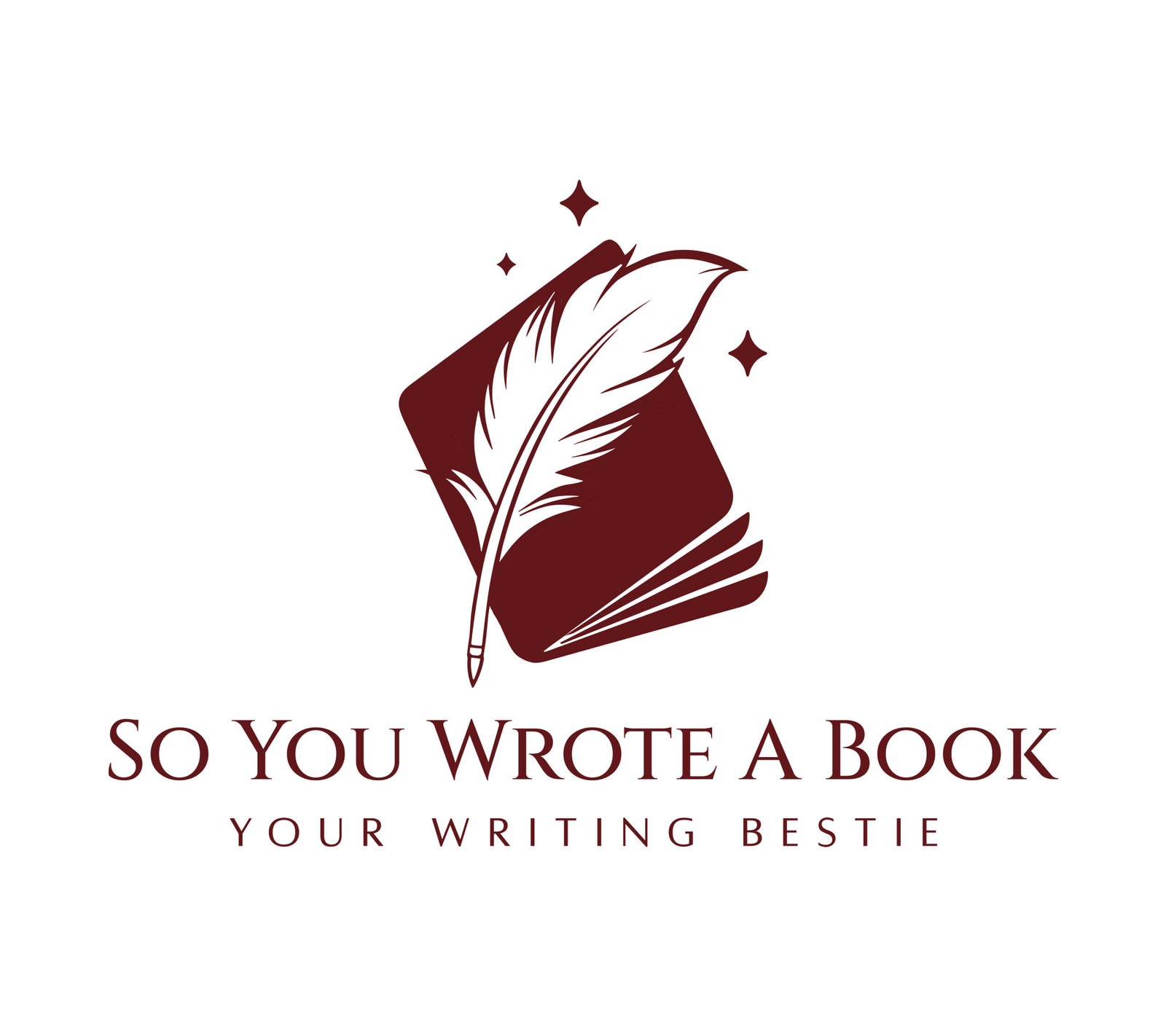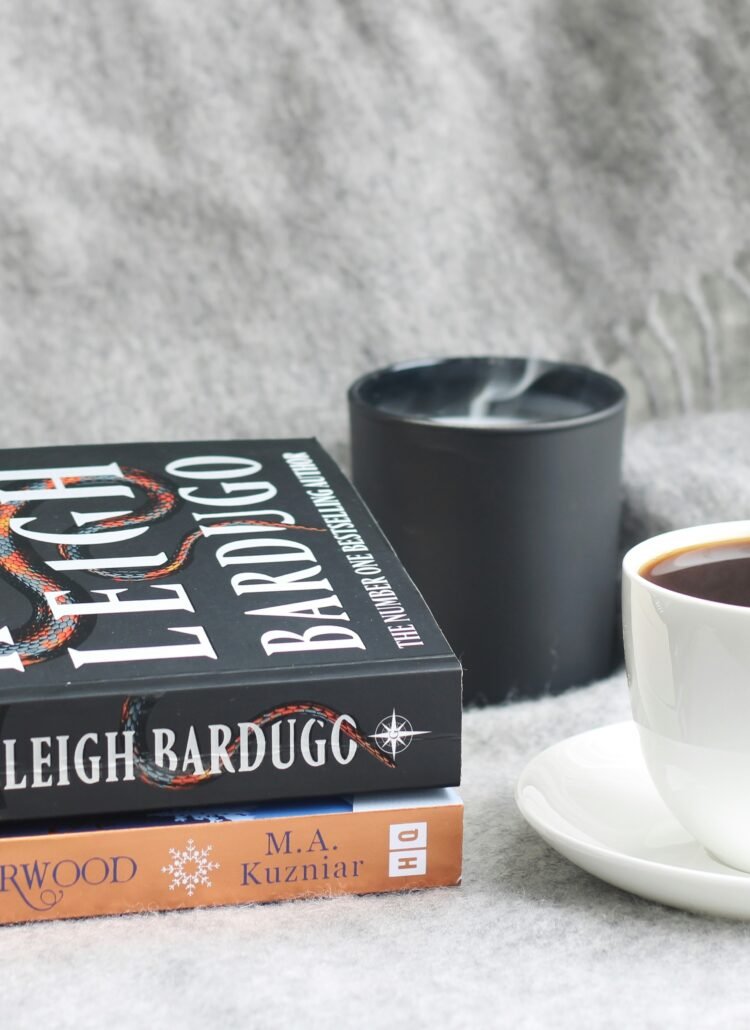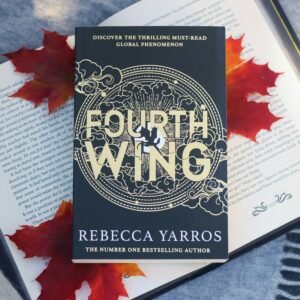Let’s be honest: writing an author bio isn’t as fun as writing your next great novel, but it’s just as important.
Whether you’re just starting out or you’ve already built a fanbase, your bio serves as the first impression for agents, readers, and publishers alike. It’s your opportunity to introduce yourself, showcase your credibility as a writer, and give a peek into your personality – without sounding like you’re trying too hard.
An author bio is more than just a few lines about your background. It’s your calling card, a snapshot of who you are as a writer and a person. In fact, it’s often the first thing people will read when they encounter your work, so getting it right is crucial.
The goal? To create a compelling, memorable bio that invites your readers to dive deeper into your stories, understand what drives you as an author, and connect with you on a more personal level. No pressure though. 😉
So, how do you get it right? How do you balance professionalism with personality, while still keeping it short and sweet? Well, we’ve got you covered. In this post, we’ll break down everything you need to know about writing the perfect author bio, from understanding when and where it’s needed to crafting a bio that highlights your achievements without sounding boastful.
Plus, I’ll share some actionable tips that’ll help you showcase your unique voice and make a lasting impression on everyone who reads it.
Ready? Let’s dive in!
What Is an Author Bio?
An author bio is a snapshot of who you are as a writer. It tells readers and publishers – basically anyone you want to know about you and your book – about your background, accomplishments, and interests in just a few sentences. Think of it as a friendly introduction where you:
- Share a bit about your writing journey.
- Highlight what makes you unique.
- Help readers feel connected to you and your work.
Your bio sets the tone for how people perceive you as an author. Whether it’s on a book jacket, your website, or a social media profile, it’s your chance to make a memorable impression.

When Do You Need an Author Bio?
Author bios aren’t just for the back of your book (though they’re definitely essential there). They can be used at various stages of your writing journey, so it’s great to start working on them before you even have a finished draft on your hands!
Here’s a detailed look at when and where your bio will come in handy:
Books and Ebooks
Every book has an ‘About the Author’ section, whether it’s a printed paperback, a hardcover, or an ebook. This is where you tell readers who you are and you establish your credibility. A well-written bio here can deepen a reader’s connection to your work, potentially encouraging them to seek out more of your books.
Query Letters and Submissions
When pitching your manuscript to agents, publishers, or editors, a strong author bio is essential. It gives industry professionals insight into your background, writing experience, and unique perspective, helping them understand why you’re the right fit for their publication or agency.
Literary Magazines and Anthologies
If your work is featured in a magazine or anthology, your bio will typically appear alongside your piece. These bios are often concise, focusing on your writing achievements, past publications, and a touch of personality.
Author Websites
Your website’s ‘About’ page is a hub for readers, journalists, and potential collaborators to learn about you. A detailed bio here can highlight your journey, showcase your published work, and direct visitors to other resources, like your latest book or social media platforms.
Social Media Profiles
While limited in space, social media bios are crucial for connecting with your audience. These condensed versions of your author bio should convey your personality, genre, and current projects in just a few sentences.
A well-crafted bio can attract followers who may become loyal readers.
Press Kits and Media Features
When promoting a book or participating in interviews, a professional bio is often included in press kits or used by media outlets to introduce you. This bio should highlight your credentials and key accomplishments while being concise and easy to adapt to different formats.
Speaking Engagements and Events
If you’re attending or speaking at literary festivals, book signings, or other events, organisers will often use your bio for promotional materials or to introduce you to audiences. A tailored bio for these occasions can emphasise your expertise and achievements while giving attendees a sense of who you are.
Writing Competitions and Applications
Many competitions and grants require a bio as part of the application process. In these contexts, your bio should emphasise your writing journey and accomplishments while aligning with the tone of the opportunity.
Freelance Work and Collaborations
If you’re freelancing or looking to collaborate with other creatives, a strong bio can showcase your skills, experience, and unique perspective, helping you stand out to potential clients or partners.
By tailoring your author bio to fit each of these scenarios, you can ensure it serves its purpose effectively while helping you build meaningful connections with readers, industry professionals, and collaborators.

How Many Author Bios Do You Need?
The short answer: you need multiple author bios, tailored to different contexts and audiences.
The long answer? Here’s a breakdown of why, when, and how you should craft varying versions of your bio to suit different needs.
The One-Sentence Bio
Sometimes called a tagline or elevator pitch, this ultra-short bio is perfect for situations where space is limited or where brevity is key.
When to use it:
- Social media profiles (e.g., Twitter, Instagram, or LinkedIn)
- Podcast introductions or event speaker blurbs
- Inside book jackets when only a sentence or two is allotted
- Anywhere else where a one sentence bio may be needed!
What to include:
Your name, writing genre or expertise, and something distinctive. For example: ‘Jane Doe writes heartwarming romance novels and is a proud dog mom based in London.
This version should be punchy, memorable, and give a quick sense of your style or personality.
The Short Bio (50–100 words)
This is your most versatile bio and often your most-used version. It balances being informative and concise.
When to use it:
- Query letters to agents or publishers
- Magazine or anthology contributor notes
- Author profiles on book retailer sites like Amazon or Goodreads
- Event programs or introductions
What to include:
Highlight key aspects of your career, such as writing accomplishments, published works, awards, and any relevant personal details. For instance: Jane Doe is the author of the award-winning novel ‘Love in the Fog’ and several short stories published in literary magazines. A graduate of the University of Edinburgh’s Creative Writing program, Jane lives in London, where she’s currently working on her next novel.
This is a very basic version but you get the gist – it gives readers or industry professionals enough to pique their interest (though I would always recommend trying to inflict some more personality into it too).

The Medium Bio (100–300 words)
This version allows for more depth and storytelling. It’s an opportunity to dive into your journey as a writer and showcase your achievements more comprehensively.
When to use it:
- Author websites (About pages)
- Guest blog posts or articles
- Press kits or media introductions
- Book marketing materials, such as brochures or newsletters
What to include:
- A brief background: your writing journey, education, or inspirations
- Highlights of your published works, awards, or milestones
- Personal details to connect with readers (e.g., hobbies, quirks, or where you’re based)
- Future projects or aspirations
For example: ‘Jane Doe is an author of contemporary romance novels known for their heartfelt storytelling and dynamic characters. Her debut novel, ‘Love in the Fog,’ won the Romantic Novelists’ Association Award and was a bestseller in the UK in its debut year. Jane’s short fiction has appeared in The New Yorker, Granta, and other literary magazines. She holds a Master’s degree in Creative Writing from the University of Edinburgh and frequently leads writing workshops for aspiring authors. When she’s not writing, Jane enjoys hiking, baking, and spoiling her rescue dog, Poppy. She is currently working on her next novel, set in the Scottish Highlands.‘
This version is particularly effective at establishing your credibility and making a personal connection with your audience (though again – I always recommend adding in some more personality too!).
The Long Bio (300–600+ words)
Your long bio is your most comprehensive version, perfect for those who want the full story. It’s essentially your writing journey in narrative form.
When to use it:
- Personal websites (detailed About pages)
- Formal applications for grants, residencies, or fellowships
- Interviews where the bio might be used verbatim
- Expanded media kits
What to include:
- A detailed account of your writing journey, including key influences and turning points
- In-depth information about your published works, themes, and accolades
- Professional milestones or contributions to the writing community
- Personal anecdotes that give insight into your personality and values
For example: ‘Jane Doe is an internationally acclaimed romance author whose work has touched the hearts of readers around the globe. Born in a small coastal town, Jane spent her early years exploring windswept beaches and scribbling stories in her notebook. After earning a degree in English Literature, she moved to London to pursue a career in publishing, eventually transitioning to writing full-time. Her debut novel, ‘Love in the Fog,’ became an instant bestseller and earned her the Romantic Novelists’ Association Award.
Jane’s work often explores themes of resilience, love, and self-discovery, inspired by her own experiences and the stories of those she’s met along the way. Her short fiction has been featured in The New Yorker, Granta, and Harper’s Bazaar. Beyond writing, Jane is passionate about fostering community among writers and frequently leads workshops and mentorship programs.
When she’s not working, Jane can be found hiking through the Scottish Highlands, experimenting with new recipes, or curled up with a good book and her rescue dog, Poppy. Her next novel, a sweeping tale of second chances set in the Highlands, is slated for release next year.‘
This version allows you to tell your story with depth, creating a meaningful connection with readers, publishers, or collaborators.
Why Multiple Bios Matter
Having several bio lengths prepared means you’ll always be ready, no matter the context. Each version serves a different purpose and lets you connect with specific audiences, but they are ultimately just expanded versions of one another.
Remember, the key to a strong author bio is adaptability. Crafting multiple versions ensures you can present yourself effectively, whether you have one sentence or a full page to work with.

How to Write a Perfect Author Bio
Here’s how to write your perfect (medium-long) Author Bio, however, many of these tips also apply to the shorter bios too!
1. Start by Knowing Your Audience
Before you start writing, it’s crucial to consider who you’re writing your bio for. Your tone, content, and even the details you include should reflect the audience’s expectations:
- Readers: They’re interested in your voice, your work, and what sets you apart as an author.
- Agents and publishers: They want to know your experience, your professional background, and your credentials.
- Event organisers or journalists: They’re looking for your accomplishments and personality, something they can use to promote or feature you.
Understanding your audience will help you create a bio that resonates and connects, making it easier to decide what to highlight about your writing journey.
2. Grab Attention with a Strong Opening Line
The first line of your bio is where you make your initial impression – make it count! This opening should immediately capture your audience’s attention and set the tone for what’s to come.
- Start with your genre or specialty if it defines your work.
- Highlight a unique element about you or your career.
- Share something quirky or personal that will intrigue your audience.
For example:
‘Sarah Mitchell writes psychological thrillers with twist endings that will leave you questioning reality.‘
‘Mark Hamilton is an ex-detective who now writes gripping crime novels based on his real-life experiences.‘
This opening should reflect both your style and your personality, giving readers something to latch onto right away.

3. Focus on Your Writing Credentials
Now that you’ve caught their attention, it’s time to establish your authority. This section of your bio should show:
- Your published works: Mention notable books, short stories, articles, or essays. If your work has received praise, don’t shy away from including those accolades.
- Writing experience: Highlight any degrees, education, courses, workshops, or writing-related roles that bolster your qualifications.
- Awards and recognition: Did you win a literary prize or get a glowing review from a major publication? Mention it!
For example:
‘Her debut novel, Shattered Dreams, was shortlisted for the XYZ Award for Best Crime Fiction and has been translated into five languages.‘
‘He’s the author of Journey Through Time, which was named a top read by the Independent Booksellers Association.’
And if you don’t have any, don’t worry! You’re not going to be penalised for being a newbie 🙂
4. Outline Your Themes and Style
Once you’ve established your credentials, it’s time to talk about what you actually write. Share the themes and styles that define your work. What do you write about? Why do you write? What themes or issues are you passionate about exploring in your stories?
This section helps readers understand what to expect from your work and why it’s meaningful. For example:
“Her novels explore the complexity of human relationships and the dark side of ambition.”
“His writing is known for its mix of historical accuracy and thrilling adventure.”
Let your audience know what they can expect when they dive into your work.

5. Add a Personal Touch
While your bio should highlight your professional achievements, it’s also an opportunity to show a bit of your personality. Include personal details that help readers connect with you on a deeper level:
- Hobbies or passions: Do you love hiking, painting, or travelling?
- A unique backstory: Did something specific inspire your writing journey?
- Fun facts: If it fits, add a quirky detail that makes your bio memorable.
For example:
‘In her spare time, Emma loves to travel to remote destinations in search of new inspiration for her novels, with a particular passion for exploring houses.‘
‘When he’s not writing, John enjoys playing the guitar and studying the mysteries of ancient civilisations.‘
These personal touches make you relatable and give your bio a human element that goes beyond just a list of achievements. People want to see real people so make sure you think outside the box about what makes you unique and share something fun and quirky! And if it related to your book? Even better!
6. End with a Call to Action
Don’t leave your readers hanging! After you’ve shared your accomplishments and personality, guide them to the next step. Depending on where your bio is being used, a call to action (CTA) will help you further engage your audience:
- For readers: Invite them to check out your website, sign up for your newsletter, or follow you on social media.
- For event organisers or journalists: Encourage them to get in touch for speaking engagements or media features.
- For agents or publishers: Make sure your contact information is clear and easy to find.
A strong CTA keeps the conversation going. For example:
‘Join her mailing list for exclusive updates on upcoming releases and behind-the-scenes content.‘
‘Follow him on Twitter for daily book recommendations and sneak peeks of his next novel.‘
A good CTA directs your audience on how they can engage further with your work.
7. Proofread Like a Pro
Before you hit submit or upload, take the time to proofread your bio carefully. Typos, awkward phrasing, and inconsistent details can detract from your credibility. Here’s how to get it just right:
- Read it aloud: This helps catch awkward sentences or phrasing that might slip by when reading silently.
- Have someone else read it: A fresh set of eyes can spot mistakes you might have missed.
- Check accuracy: Double-check the facts you’ve listed (book titles, awards, etc.) for accuracy.
A polished bio helps you come across as professional, making sure you leave the best impression possible.

Tips for Writing the Perfect Author Bio
Write in the Third Person
Although it might seem more natural to write your bio in the first person, it’s best to stick to third-person writing. This approach helps your bio sound more polished and objective, which is especially important when it’s being read by potential agents, editors, or event organisers. A third-person bio also creates a professional tone that stands out, making you appear more approachable as an author but with a sense of authority and credibility.
For example: ‘Emma Davis is a bestselling author known for her gripping historical fiction. Her novels have been translated into several languages, and she’s won multiple literary awards.‘
Skip Your Extended Life Story
While it may be tempting to include every little detail of your writing life in your bio, less is often more. Readers and publishers don’t need to know about your childhood dreams or every job you’ve had unless it directly relates to your writing career. Your author bio is about what’s relevant to your work, so focus on key milestones that demonstrate your expertise and credibility.
Instead of a lengthy life history, highlight the experiences that shape your writing or inform your work. For example:
‘After working as a journalist for over a decade, she transitioned to writing mystery novels that reflect her deep understanding of human nature.‘
Stick to what’s most relevant and impactful, and let your work speak for itself.
Don’t Be Shy About Your Achievements
This is your opportunity to showcase your writing accomplishments, so don’t hesitate to highlight your achievements! Whether it’s awards, notable publications, or impressive sales figures, you’ve earned them, and they help establish you as an authority in your field.
Remember, your bio isn’t the place to be modest – it’s about presenting yourself as a credible, established writer. If you’ve been published in major outlets, received critical acclaim, or won any prestigious awards, mention it! For example:
‘His debut novel, The Silent Witness, won the ABC Book Award for Best Thriller and has been optioned for film adaptation.‘
Celebrating your successes not only builds your credibility but also helps attract potential readers and opportunities.

Only Add Information You’re Comfortable With
While you may want to add as much information as possible, it’s essential to be mindful of the details you choose to include. Your author bio is an extension of your personal brand, so only share information that you’re comfortable putting out into the world.
If there’s personal information or details you’d rather not share – whether it’s about your family, health, or past experiences – don’t feel pressured to include it in your bio. You can still craft a compelling narrative about your writing journey without revealing anything too private.
For example: ‘Jane Smith is the author of Beneath the Surface, a debut novel that explores themes of identity and belonging.‘
You don’t have to overshare – just focus on what’s relevant to your writing career and what you’re okay with your audience knowing.
Add Your Own Spin or Hook
Your author bio should be engaging, so don’t be afraid to inject a bit of personality into it. A unique hook can make your bio stand out and leave a lasting impression on readers.
This could be anything from your writing style to a quirky personal fact, or something about your work that’s different from others in your genre. The goal is to create a bio that’s memorable and true to who you are as a writer.
For example:
‘Known for blending magical realism with contemporary fiction, Sarah Thompson creates worlds where the ordinary becomes extraordinary.‘
‘With a love for adventure, Jack Greene’s novels transport readers to far-off lands, all while exploring the intricacies of human relationships.‘
Think of your bio as your elevator pitch: make it quick, unique, and attention-grabbing. A little personality goes a long way!
Match Your Tone to Your Brand
The tone of your bio should reflect your writing style and the brand you’re building as an author. If you write thrillers, your bio could be more suspenseful or serious, but if you write lighthearted romance, your bio may be fun and approachable.
Ensure that your bio feels like a natural extension of your voice. The language you use, the mood it conveys, and the way you describe yourself should align with the tone of your books.
For example:
- For a cozy mystery author: ‘In her spare time, Lily Adams enjoys knitting and solving real-life mysteries with her cat, Muffin.‘
- For a serious literary fiction author: ‘With a deep focus on the human condition, Richard Maxwell’s novels explore the fragility of life and the complexity of the soul.‘
Be sure that the tone of your bio stays in harmony with the vibe you want to convey to your readers.
Let It Rest for a While
Once you’ve written your bio, step away from it for a while before reviewing it. This will allow you to look at it with fresh eyes and catch any errors or awkward phrasing you might have initially missed. It’s easy to get too close to your own work, so giving it a little time helps you see it objectively.
Let it rest for at least a day before you edit it. During this time, you might even come up with new ideas or find ways to refine the bio further.
Keep It Up to Date
Finally, it’s essential to keep your author bio current. As your career evolves, so should your bio. Whether it’s a new book release, an award, or a speaking engagement, your bio needs to reflect your latest achievements and projects.
Check your bio periodically – every six months or so – to make sure the information is still accurate. If you’ve written a new book, joined a new platform, or hit a significant milestone, update your bio to include it.
For example:
‘Her third novel, Whispers in the Dark, was released in 2024 and has become a national bestseller.‘
An up-to-date bio shows that you’re active and relevant in the writing community, which will help keep readers, agents, and event organisers engaged with your work.

Working on your author package? Here are a few other things you may want to write!
How to Write a Novel Synopsis That Actually Works (Even If You Haven’t Finished Your Draft)
How to Find Comp Titles for Your Novel (And Why You Need Them)





